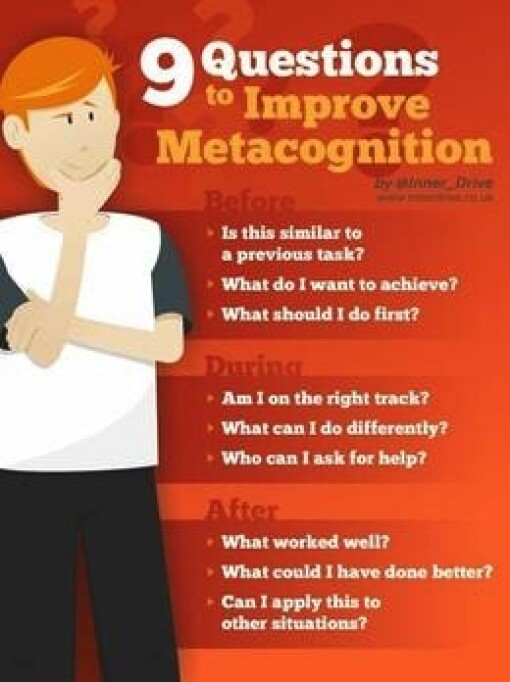Metacognition in the classroom
What is metacognition in school?
Metacognition is a child’s ability to be aware of what they are thinking about and choosing a helpful thought process. This simply means that metacognition is thinking about thinking. There are questions that a child can ask themselves when thinking and these are outlined in the photo below.

This poster is displayed around the school so that children can easily access the questions and apply them to their learning, encouraging 'thinking about their thinking'.
Benefits of metacognition for children:
They can induct flexibility in their performances.
They will have strategies in place to approach information they are given.
They can prioritise to utilize information at the right time.
They can develop a definite goal.
They can develop a positive frame of mind.
They can develop a scalable plan of action.
Has there been any research and what does it show?
50% – 66% of the world’s population engage in metacognition – John Flavell, 1979.
Some children have no ideas of what they should do when they confront a problem and are often unable to explain their strategies of decision making – Sternberg and Wagner, 1982.
Students without metacognitive approaches are essentially learners without direction or opportunity to review their progress, accomplishments and future directions – O’Mally, Chamot, Stewner-Mazanaares, Russo & Kupper, 1985.
Metacognition and Meta learning in the classroom
Here is a short video to help students in the development of their own learning by using metacognition (thinking about their thinking) and meta learning (thinking about their learning).
Below are the slides from a collective worship on 'Metacognition'.
